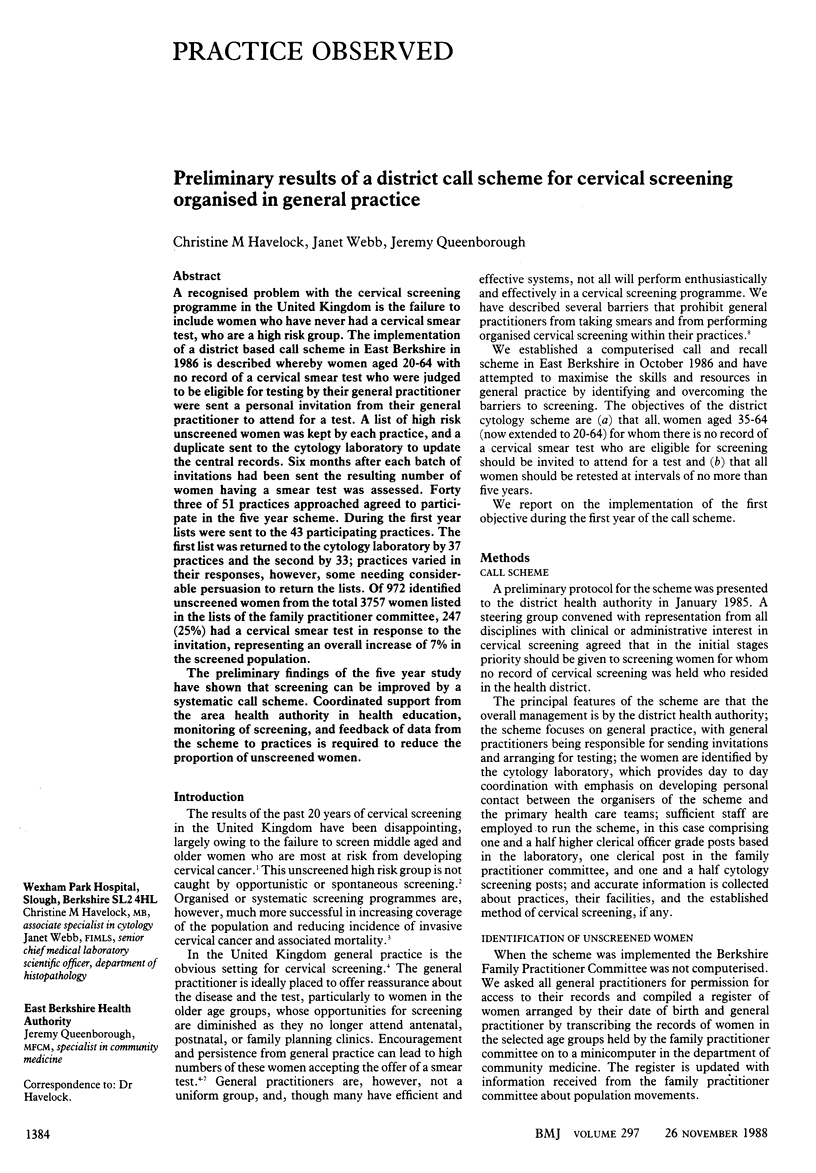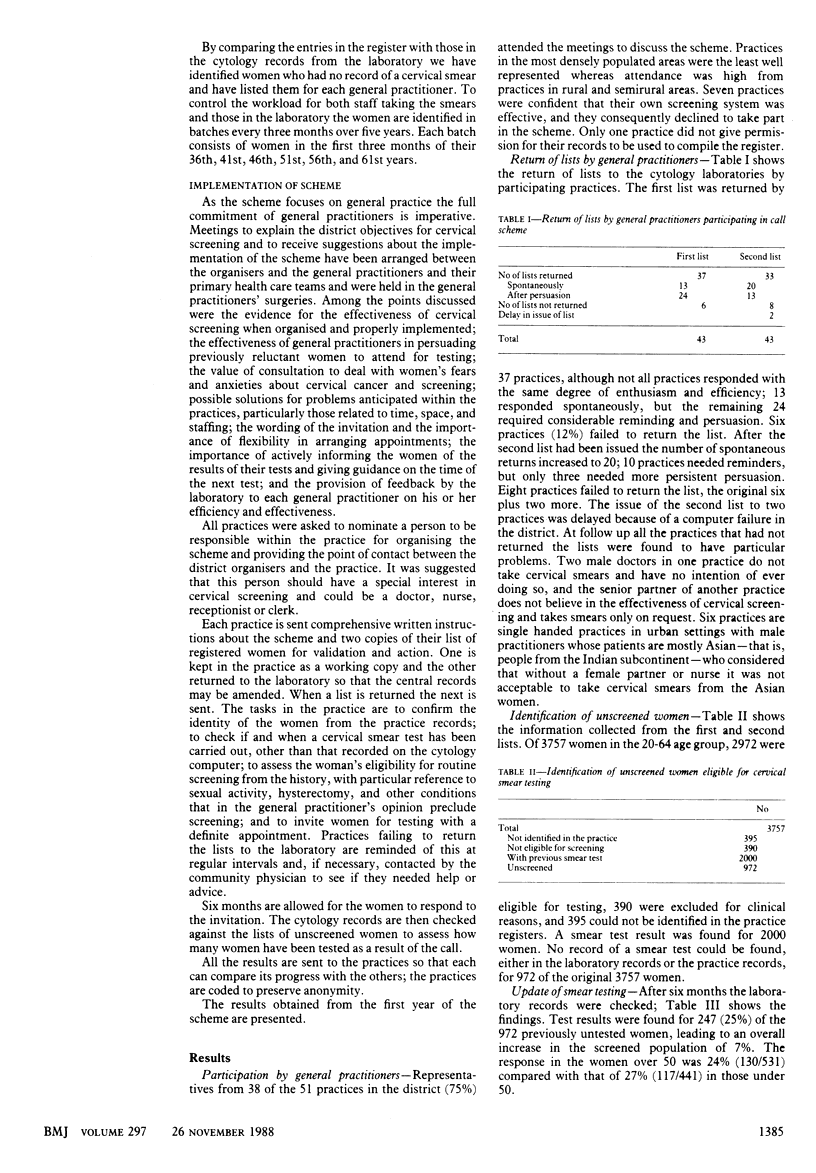Abstract
A recognised problem with the cervical screening programme in the United Kingdom is the failure to include women who have never had a cervical smear test, who are a high risk group. The implementation of a district based call scheme in East Berkshire in 1986 is described whereby women aged 20-64 with no record of a cervical smear test who were judged to be eligible for testing by their general practitioner were sent a personal invitation from their general practitioner to attend for a test. A list of high risk unscreened women was kept by each practice, and a duplicate sent to the cytology laboratory to update the central records. Six months after each batch of invitations had been sent the resulting number of women having a smear test was assessed. Forty three of 51 practices approached agreed to participate in the five year scheme. During the first year lists were sent to the 43 participating practices. The first list was returned to the cytology laboratory by 37 practices and the second by 33; practices varied in their responses, however, some needing considerable persuasion to return the lists. Of 972 identified unscreened women from the total 3757 women listed in the lists of the family practitioner committee, 247 (25%) had a cervical smear test in response to the invitation, representing an overall increase of 7% in the screened population. The preliminary findings of the five year study have shown that screening can be improved by a systematic call scheme. Coordinated support from the area health authority in health education, monitoring of screening, and feedback of data from the scheme to practices is required to reduce the proportion of unscreened women.
Full text
PDF


Selected References
These references are in PubMed. This may not be the complete list of references from this article.
- Cook G. A., Draper G. J. Trends in cervical cancer and carcinoma in situ in Great Britain. Br J Cancer. 1984 Sep;50(3):367–375. doi: 10.1038/bjc.1984.185. [DOI] [PMC free article] [PubMed] [Google Scholar]
- Draper G. J. Screening for cervical cancer: revised policy. The recommendations of the DHSS Committee on Gynaecological Cytology. Health Trends. 1982 May;14(2):37–40. [PubMed] [Google Scholar]
- Elkind A. K., Haran D., Eardley A., Spencer B. Computer-managed cervical cytology screening: a pilot study of non-attenders. Public Health. 1987 Jul;101(4):253–266. doi: 10.1016/s0033-3506(87)80076-8. [DOI] [PubMed] [Google Scholar]
- Havelock C., Edwards R., Cuzick J., Chamberlain J. The organization of cervical screening in general practice. J R Coll Gen Pract. 1988 May;38(310):207–211. [PMC free article] [PubMed] [Google Scholar]
- Lără E., Day N. E., Hakama M. Trends in mortality from cervical cancer in the Nordic countries: association with organised screening programmes. Lancet. 1987 May 30;1(8544):1247–1249. doi: 10.1016/s0140-6736(87)92695-x. [DOI] [PubMed] [Google Scholar]
- McMullin G. P. Phenobarbitone and the neonate. Lancet. 1969 Aug 16;2(7616):385–386. doi: 10.1016/s0140-6736(69)92737-8. [DOI] [PubMed] [Google Scholar]
- Spenser J. T. A survey of cervical smear screening in general practice. Practitioner. 1967 Feb;198(184):274–280. [PubMed] [Google Scholar]
- Standing P., Mercer S. Quinquennial cervical smears: every woman's right and every general practitioner's responsibility. Br Med J (Clin Res Ed) 1984 Oct 6;289(6449):883–886. doi: 10.1136/bmj.289.6449.883. [DOI] [PMC free article] [PubMed] [Google Scholar]
- The management of a cervical screening programme: a statement (October 1985). The ICRF Coordinating Committee on Cervical Screening. Community Med. 1986 Aug;8(3):179–184. [PubMed] [Google Scholar]
- Williams P. A., Williams M. Barriers and incentives for primary-care physicians in cancer prevention and detection. Cancer. 1987 Oct 15;60(8 Suppl):1970–1978. doi: 10.1002/1097-0142(19901015)60:8+<1970::aid-cncr2820601508>3.0.co;2-m. [DOI] [PubMed] [Google Scholar]


